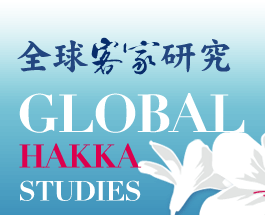|
|
| May 2018 |
 |
10 |
|
 |
| 頁數:235-258 |
| 六堆客家墓區田野踏查紀要 |
| Field Research on a Hakka Burial Ground Culture in Liudui |
|
 |
|

|
| 作者 |
張永明、曾純純 |
| Author |
Yung-ming Chang and Chun-chun Cheng |
| 關鍵詞 |
墓葬文化、宗族秩序、祖先崇拜、古老大人、風水 |
| Keywords |
Burial Ground Culture, Lineage Order, Ancestral Apotheosis, guˋloˋtai nginˇ , Feng Shui |
| 摘要 |
本文集結筆者近年在高屏地區各墓園田野調查資料的整理,以及對於生命禮俗更深一層的體驗。六堆客家公墓中的「古老大人 」,部分已轉化為護衛祖墳風水的「號墳 」風俗,且在經歷世代傳承奉祀之後,亦有登入族譜或刻入墓碑合族共祭的現象,在進入宗族秩序的條件而言,已初具祖先墳墓崇拜的雛型,惟在其無名姓與血緣分際上的隔閡,似與傳統進入宗族秩序的管道有所區隔,期以本文觸發相關概念再思考。
傳統客家生命禮俗中的墓葬文化,銘刻著世代交替的符碼與印記,而墓園不僅是親友憑弔亡者之處,更是強化彼此連帶關係的社群空間,冀以閩客社會結構的文化差異樣貌,紀錄多元族群交融下之民間更深一層的墓葬文化,提供相關類型研究範疇酌參。 |
| Abstract |
This study examined the burial ground cultural in Liudui. For example, the custom of “gǔlǎodàrén” veneration arose from the respect for the dead and the fear of ghosts. However, the empty space remained after buried bodies were moved to other places for veneration has been used by some “grave cockroaches” to establish empty graves to be sold later. This kind of act is called “hào fén.” During immigration, reclamation, and settlement, the Hakka people in Liudui implemented self-defense awareness in their burial ground culture. |
|
|
 |
|

